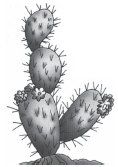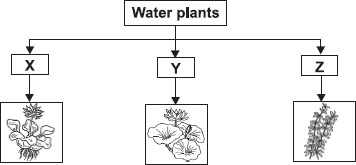Subject :NSO Class : Class 7
Subject :NSO Class : Class 8
Fill in the blanks with the most appropriate option.
If a guitar string is pulled strongly, its amplitude of vibration (i) and the note heard is (ii). If it is pulled lightly, its amplitude of vibration (iii) and the note heard is (iv).
| (i) | (ii) | (iii) | (iv) | |
| A | Increases | Louder | Increases | Louder |
| B | Decreases | Softer | Decreases | Softer |
| C | Increases | Louder | Decreases | Softer |
| D | Decreases | Softer | Increases | Louder |
Post Your Answer
Subject :NSO Class : Class 8
Post Your Answer
Subject :NSO Class : Class 8
Ans 1:
Class : Class 8
Pollution---------------
The term pollution belongs to the Latin words pollution, which is the process of making the invironmant, pollution is the contamination of natural resource like air, water and land with harmful(toxing and poisonous) substance.
Pollution is the biggest problem in our country. Pollution is very harmful for our health. It can causeany deasese, smoke of vehicles, factories and burning of trees release harmful gases such as sulfore dioxide and carbon monoxide, when we breath poisonous gas we might cause cancer, asthma and lung deaseses, polluted air causes acid rain. Acid rain make the water and lakes poisonous also destroy the aquatic animals.
We can control pollution in the following base:- growing more trees and plants to reduce in creasing green house effect. Use recycle paper to save trees. In courage use of public transport. Washing clothes, cleaning utensils or taking a bath near water bodies such as lakes, rives and ponds should be restricted. Use less fertilizers and pesticides. Death bodies should be cremated or buried and not desposed of in a river or lakes. Use of less polluting anergy resource like hidroelectric energy, solar energy and wind energy. Replace would, col kerosine with clean fuel, LPG for domestic use through the garbage at proper place. Compost pit should be made for biodegradable waste. Plastic bags should be reduced. Pollution control rules inforced by the government should be followed sticktly. Use morder automobile engines in vehicles which bring about complete combustion of fuel. This reduce the release of carbon monoxide and smoke. Domestic sea ways should be treated at the sea ways treatment plants to remove toxic substance before being released into water bodies.
Due to human greediness and misuse of freeness of doing anything lead them to words serious degradation and mismanagement of resource. So, the invironmantal issue needs to be solved on urgent basis by the effort of all offers. It requires a joined effort from everyone to get control over the pollution. So, it needs leamitation over all the causes of the invironmantal pollution.
Post Your Answer
Subject :NSO Class : Class 6
Post Your Answer
Subject :NSO Class : Class 8
In which of the following cases the friction is helpful (H) and troublesome (T)?
(A) Lighting a matchstick
(B) Applying the brakes on a cycle
(C) Use a towel to open tightly closed lid of a bottle
(D) Pulling drawer out of a desk
| (A) | (B) | (C) | (D) | |
| A | T | T | H | H |
| B | H | H | T | T |
| C | T | T | T | H |
| D | H | H | H | T |
Post Your Answer
Subject :NSO Class : Class 8
Post Your Answer
Subject :NSO Class : Class 4
Post Your Answer
Subject :NSO Class : Class 3


